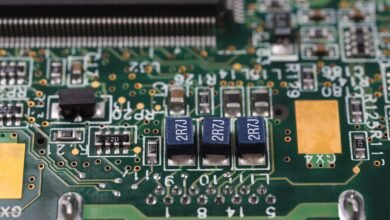Como instalar dvb-t2 in vmware workstation

How to Install DVB-T2 in VMware Workstation
Digital Video Broadcasting – Second Generation Terrestrial (DVB-T2) is a globally adopted standard for transmitting digital terrestrial television. Setting up DVB-T2 in a virtualized environment, such as VMware Workstation, can help test configurations or run specific applications. This guide will walk you through the steps to install and configure DVB-T2 on VMware Workstation.
1. Prerequisites
Before starting, ensure you have:
- A licensed copy of VMware Workstation.
- A host machine with a DVB-T2 USB receiver.
- A compatible operating system ISO file for the guest OS.
- Internet connectivity for downloading drivers and software.
2. Download and Install VMware Workstation
- Visit the VMware Workstation official website and download the latest version.
- Follow the on-screen instructions to install VMware Workstation on your host machine.
3. Create a New Virtual Machine
- Open VMware Workstation and click Create a New Virtual Machine.
- Choose the Custom configuration for advanced settings.
- Select the guest OS installation source, either from an ISO file or a physical disk.
- Assign sufficient RAM and CPU cores for optimal performance.
- Set up a virtual disk with at least 20 GB of space.
4. Install the Operating System
- Boot the virtual machine using the ISO file of the operating system you plan to use (e.g., Windows or Linux).
- Complete the OS installation by following the standard steps for your chosen system.
5. Prepare for DVB-T2 Installation
- Ensure the virtual machine has VMware Tools installed for enhanced performance and hardware compatibility.
- Update the guest OS to the latest version, including security patches.
6. Add USB Device Support for DVB-T2 Receiver
- Plug the DVB-T2 USB receiver into your host machine.
- In VMware Workstation, go to the Virtual Machine Settings.
- Under Hardware, add a USB Controller if it is not already present.
- Attach the DVB-T2 USB device to the virtual machine by selecting it from the Removable Devices menu.
7. Install DVB-T2 Drivers in the Virtual Machine
- Download the latest DVB-T2 drivers from the manufacturer’s website.
- Install the drivers on the guest operating system.
- For Windows, run the installer and follow the prompts.
- For Linux, use the appropriate package manager or manual installation commands.
8. Install DVB-T2 Software
- Install software to decode and manage DVB-T2 streams, such as VLC Media Player, TVHeadend, or ProgDVB.
- Configure the software to recognize the DVB-T2 USB receiver.
9. Configure DVB-T2 Settings
- Open the installed DVB-T2 software and configure the following:
- Frequency settings for your region.
- Video and audio codecs.
- Recording options, if applicable.
- Scan for available channels to ensure the DVB-T2 receiver is working correctly.
10. Test DVB-T2 Setup
- Launch the DVB-T2 software and test streaming or recording.
- Verify video quality and playback stability.
11. Common Issues and Troubleshooting
Problem 1: USB Device Not Detected
- Ensure the USB receiver is connected to the host.
- Check if USB passthrough is enabled in VMware.
Problem 2: Driver Installation Errors
- Verify compatibility between the DVB-T2 receiver and the guest OS.
- Reinstall drivers or try an alternative version.
12. Tips for Optimizing DVB-T2 in VMware
- Allocate sufficient resources (CPU and RAM) to the virtual machine.
- Use a high-speed USB port for better performance.
- Update DVB-T2 software regularly to access new features and fixes.
13. Frequently Asked Questions
Can I use a different hypervisor?
Yes, but the steps may vary. Check compatibility with your hypervisor.
Do I need internet access for DVB-T2?
Internet access is not required for basic functionality but may be needed for software updates.
14. Conclusion
Installing DVB-T2 in VMware Workstation provides a flexible environment for testing and running digital TV applications. By following this guide, you can configure your virtual machine to work seamlessly with a DVB-T2 receiver.



